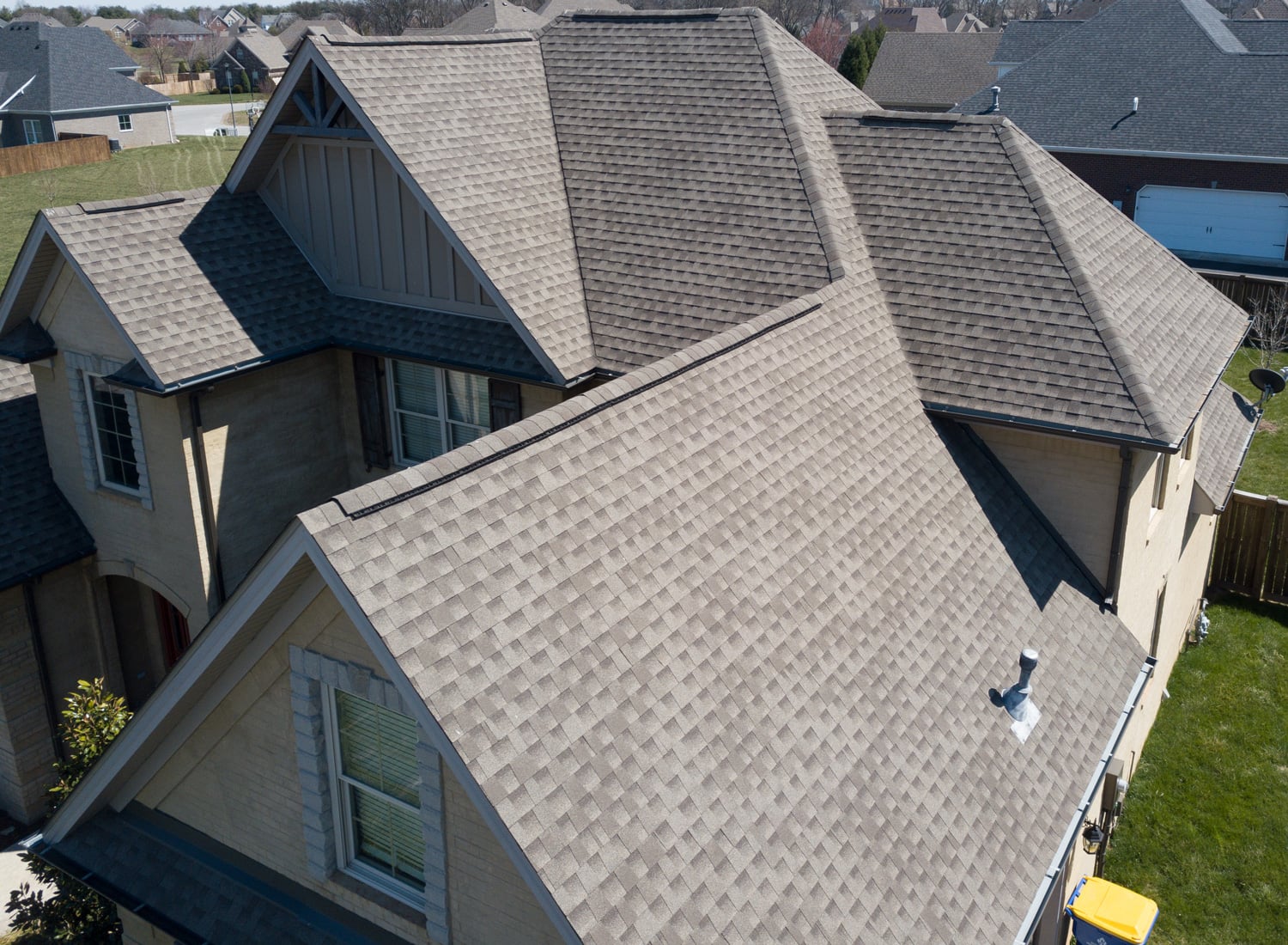Properly ventilating your home is necessary for the long-term health of your living space. As you build a new home or remodel, you may be wondering how many roof vents are needed for the task. To save you the trouble and stress, we've done the research to give you an answer.
If your roof has a vapor barrier installed, then you will need one roof vent per every 300 square feet of attic space. If your roof does not have a vapor barrier installed, then you will need one roof vent per every 150 square feet of attic space.
Now you know approximately how many roof vents you will need to have installed in your home. However, you may want more details, and you may be wondering why this is necessary. We'll discuss this subject in more detail. Keep reading to learn more.

Calculating The Number Of Roof Vents You Need
Calculating the number of roof vents for your specific home can be confusing, but it doesn't have to be. We'll give you an easy way to calculate the number of these ventilation devices needed for your house. We'll also discuss why it's a necessary investment.

For Roofs With A Vapor Barrier
Roofs are typically installed with vapor barriers, and this can help create a more comfortable and cost-efficient home. As condensation repeatedly gathers on rooftops or precipitation falls, moisture-filled air can easily be transmitted into the home.
Vapor barriers are added to roofs to prevent this from happening. If your home has a vapor barrier, it makes sense that fewer roof vents are needed.
In this scenario, a roof vent is needed for every 300 square feet of attic space. For instance, if an attic consists of 1,500 square feet of space, then 5 roof vents will be required.
For Roofs Without A Vapor Barrier
However, there are times when a vapor barrier is not present on the roof. This may especially be true if it is an older build and the roof has not been updated. Perhaps you do not currently have the time or money to both replace the roofing and install roof vents.
If this is the case, you will need to install a roof vent for every 150 square feet of attic space. So, if an attic consists of 1,500 square feet of space, then 10 roof vents will be required.
The Exceptions

There are a couple of exceptions to these rules. One of them could be local building codes.
When building a new home or performing a remodel, it is always a good idea to check with your city hall to ensure that you are following the local building codes. They may require more or fewer roof vents than you have deemed necessary.
Another exception could be the climate being especially dry or wet. You can always check with a contractor to ask for their recommendations. In an especially dry climate, fewer roof vents may be necessary. In an especially wet climate, more roof vents may be necessary.
What Do Roof Vents Do?
Roof vents remove heated and wet air from the home. They are necessary to keep the home comfortable and prevent issues such as decay, roof damage, and more.
In the winter and in overall cool climates, roof vents prevent the formation of ice dams. Ice dams are formed when ice and snow on a roof are melted by the sun or heat trapped in the attic space. Then this water freezes and creates heavy sheets of ice.
This puts a strain on the roof and can cause costly damage. Roof vents prevent this from occurring by releasing hot and wet air into the atmosphere.
In the summer or in hot climates, roof vents are just as needed. Hot air rises, and without roof vents, there will be nowhere for this air to escape. A properly ventilated roof will allow the heat to escape to aid in keeping the home cool and comfortable. It will also keep energy costs as low as possible.
Choosing Roof Vents
Beyond just being sure that you purchase the correct number of roof vents, being sure that you choose the right ones for the job can feel like a daunting task. We'll provide you with more information to help you with this as well.
What Are The Types Of Roof Vents?
There are a few popular types of roof vents, and each may be right for you depending on your situation. We'll define and discuss each type.
Turbine Roof Vents
First on the list are turbine roof vents. These may also be called "wind turbines" or "whirlybirds." This type of vent is dependent on wind flow to turn its turbine. This, in turn, causes air to be drawn up into the system and ventilated to the outdoors.
Check out this turbine roof vent on Amazon.
Turbine roof vents do release an amount of air from the attic space even on still days, but they are highly efficient on windy days.
They are also inexpensive to purchase and do not cost anything to run, as they are powered by the wind itself. However, if you live in a climate in which there is not much wind, it may not be the best for you.
Box Vents
Next are box vents. These are specifically created to be installed on a roof's ridge, and they are very simple in design. They do not pull the air up and out of the roof. Instead, they simply allow the air to escape, having been strategically placed where the air will rise and gather the most.

Soffit Vents
Third, are soffit vents. These may also be called "eave vents" because they are installed on the eaves of a building. An eave is the part of the roof which overhangs a building's exterior walls.
Take a look at this continuous soffit vent on Amazon.
This type of vent pulls cool air from the outside air, filling the attic space. These are usually used in conjunction with the last type of roof vent on our list, the ridge vent.
Ridge Vent
Finally, the ridge vent is a type of vent which is placed along the entire high ridge of the home. Instead of just releasing air into the atmosphere, it distributes hot and cool air throughout the attic space evenly.
Alongside the soffit vent, this type is very helpful to keep an even temperature throughout the attic and along the roof.
Take a look at this ridge vent on Amazon.
What Is The Best Roof Vent?
There is no particular roof vent that is best for all. For most, it is best to install a system of vents using two or more of the aforementioned types.
If you are living in a particularly windy climate, such as the Midwest, you may consider a system of wind turbines. These are extremely powerful in windy conditions, and you will find that they sufficiently keep your home cool and the roof protected. You may consider pairing wind turbines with box vents as well.
If you live in an area that does not experience much windy weather, you may find that a system of soffit and ridge vents is best. These will pull cool air in and distribute it without the need for specific weather conditions.
In Closing

Roof ventilation is required for all homes and is especially important to prevent decay, mold, and roof deterioration. You may have been confused as to how many roof vents are needed to properly ventilate your attic space and protect your investment.
If your roof has a vapor barrier, you will need one roof vent per every 300 square feet of space. If your roof does not have a vapor barrier, you will need one roof vent per every 150 square feet of space.
We also discussed the types of these vents and how each works. We hope that this information has been helpful to you in your home improvement tasks.
Want to learn more about ventilating your home? Visit these related posts:
Can You Install A Soffit Without Fascia?



